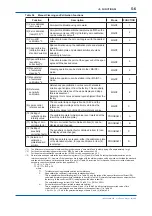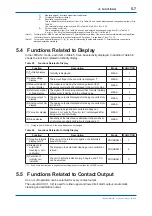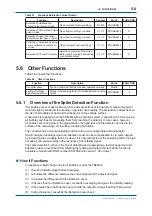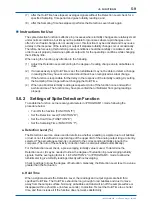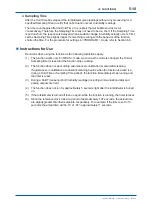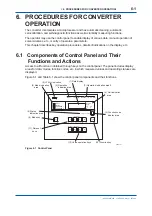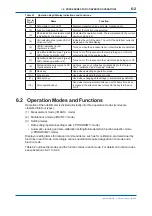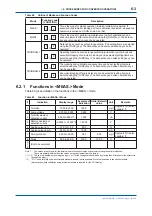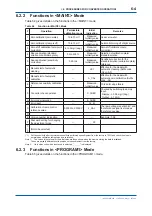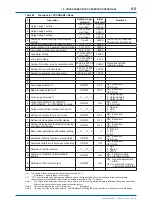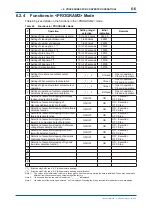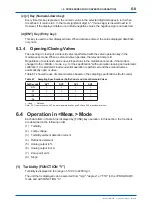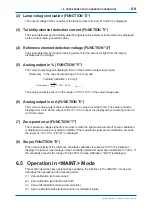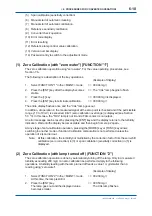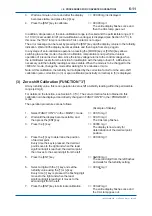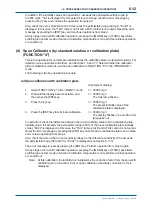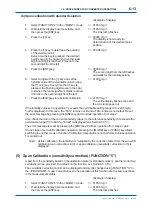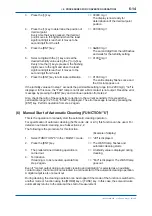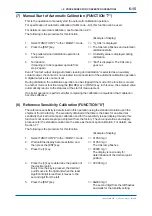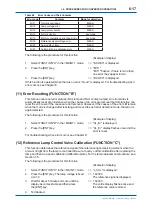
<6. PROCEDURES FOR CONVERTER OPERATION>
6-2
IM 12E04A02-02E
Table 6.1 Operation Keys/Display Indications and Functions
No. in
Fig. 6.1
Name
Function
(1)
Data display (in red LED)
Displays measured values, set data, messages, etc.
(2)
Function code area (in red)
Displays the function code selected.
(3)
Mode indication area (active mode
is indicated by the green lamp)
Ondicates the operation mode. The lamp relevant to the current
operation mode is lit.
(4)
Unit indication area (green LED of
active unit is lit)
Indicates the unit of the data. The unit of the data item currently
displayed in the data display.
(5)
<FAIL> indication (in red:
characters in relief)
Turns on when the processor fails or other failures are detected.
(6)
Operation indication area 1 (green
LED of active operation is lit)
Turns on or off in response to the lamp turning on or off or the
selected range of the analog output.
(7)
Operation indication area 2 (green
LED of active operation is lit)
Turns on or off in response to the solenoid valve being on or off.
(8)
Status indication area (green LED
of active status is lit)
Lights up, goes out, or
fl
ashes corresponding to the "output
hold", "calibration" and "cleaning" statuses.
(9)
Mode key
Used when selecting an operation mode.
(10)
Function key
Used when selecting the function code.
(11)
Data set keys
Used when changing data settings or implementing calibration.
(12)
Valve operation keys
Used when turning solenoid valves on or off. Every time a key
is pressed, the solenoid valve relevant to the key is turned on
or off.
6.2 Operation Modes and Functions
Operation of the turbidimeter is divided principally into three operation modes (modes are
classi
fi
ed into four types).
(1) Measurement mode (<MEAS.> mode)
(2) Maintenance mode (<MAINT.> mode)
(3) Setting
modes
• Data setting/operation setting mode (<PROGRAM1> mode)
• Automatic cleaning and zero-calibration setting/failure detection function selection mode
(<PROGRAM2> mode)
Display or setting items for data and command items, such as for calibration, are determined by
functions in each mode. Accordingly, various operations require designation of a mode and a
function code.
Table 6.2 outlines the modes and the function codes in each mode. For details on function codes,
see subsections 6.2.1 to 6.2.4.
3rd Edition : May. 31, 2010-00
Summary of Contents for Vigilant Plant EXA TB Series
Page 49: ...Blank Page ...
Page 59: ...Blank Page ...
Page 119: ...Blank Page ...
Page 125: ...Blank Page ...
Page 127: ...Blank Page ...
Page 133: ...Blank Page ...









